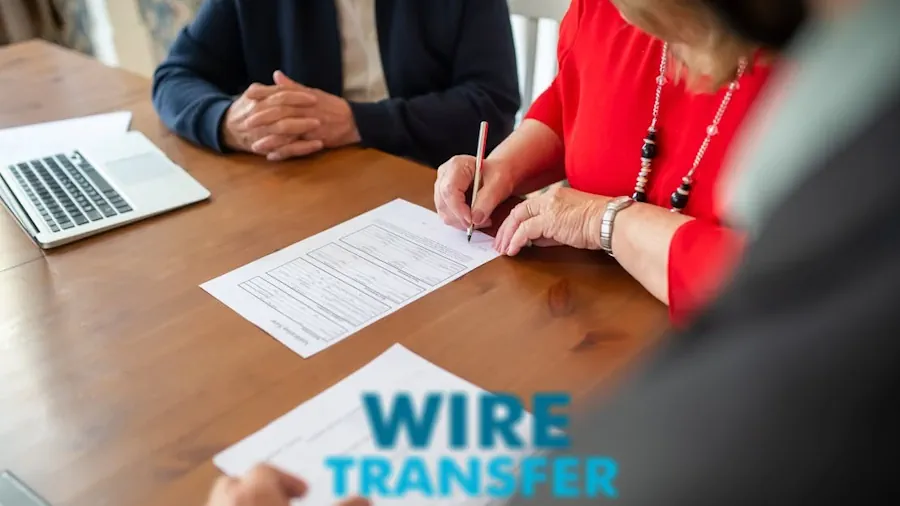How to Dispute and Reverse a Wire Transfer
Contents
Wire transfers allow you to send money electronically, with the process initiated and managed by banks. They are fast, secure, and dependable, making them ideal for large transactions, as the funds are available to the recipient immediately. However, mistakes can happen, and understanding the process for disputing and reversing a wire transfer is crucial.
Can a Wire Transfer Be Reversed?
Reversing a wire transfer after it has been sent and accepted is challenging but not impossible. There are specific circumstances where you might qualify for a wire transfer reversal:
- Bank Error with Account Number: If the bank made a mistake with the recipient’s account number.
- Overpayment: If the recipient received more money than you intended to send.
- Duplicate Transfer: If the wire transfer was duplicated due to an error.
In these situations, since the mistake originated from the bank, they will reverse your transfer. Conversely, if the error was on your part, it is highly unlikely that the wire transfer will be returned to you.
How Much Time Do I Have to Cancel a Wire Transfer?
If you initiate a wire transfer but then change your mind, you can reverse it. Under the new rule in the Dodd-Frank Wall Street Reform and Consumer Protection Act, you have up to 30 minutes to cancel an international remittance for free. This window allows you to act quickly if you realize a mistake has been made.
What Happens if a Wire Transfer Goes to the Wrong Account?
If you enter the wrong routing or bank account number, transactions are typically rejected. If the transfer goes through, you can request a wire transfer reversal from the bank to reject the transaction. However, if the funds were sent to the wrong account and not rejected, there’s little that can be done.
Can I Dispute a Wire Transfer?
Disputing a wire transfer is a race against time. Once the recipient’s bank has accepted the transfer, it’s too late to reverse it. Prompt action is essential to resolve any issues. If you suspect a problem with your wire transfer, contact your bank immediately to explore your options.
How long does it take for a wire transfer to be returned?
The time it takes for a wire transfer to be returned can vary depending on several factors, including the policies of the banks involved and the reason for the return. Generally, it can take anywhere from a few days to a couple of weeks for the funds to be credited back to the sender’s account.
Here are some typical scenarios:
- Bank Error: If the bank made an error, such as an incorrect account number, the return process might be faster, typically within a few business days.
- Recipient Bank Rejects Transfer: If the recipient’s bank rejects the transfer due to issues like a closed account or incorrect details, the return usually happens within 3-5 business days.
- Fraud Investigation: If a transfer is being investigated for fraud, it might take longer, potentially weeks, as the banks conduct thorough investigations.
- International Transfers: For international wire transfers, the process can take longer due to additional intermediaries and cross-border regulations, often ranging from 5 to 15 business days.
In all cases, maintaining communication with your bank and providing all necessary information promptly can help expedite the process.
How to avoid errors in wire transfers
Avoiding errors in wire transfers is crucial to ensure that your funds reach the intended recipient without issues. Here are some key tips to help you avoid common mistakes:
- Double-Check Details: Verify all recipient details, including the account number, routing number, SWIFT code (for international transfers), and the recipient’s name. Small errors can lead to significant problems.
- Use Templates: If you frequently send money to the same recipients, use bank templates to minimize the risk of entering incorrect information.
- Confirm Recipient Information: Always confirm the recipient’s details directly with them to ensure accuracy.
- Review Before Sending: Before finalizing the transfer, review all the information carefully. Many banks provide a confirmation screen for this purpose.
- Understand Bank Policies: Familiarize yourself with your bank’s wire transfer policies, including deadlines, processing times, and any fees that may apply.
- Secure Communication: Use secure methods to share and receive banking information to protect against fraud.
- Test with Small Amounts: For first-time transfers, consider sending a small amount first to ensure that all details are correct before sending larger sums.
- Keep Records: Maintain detailed records of all wire transfer transactions, including receipts, confirmation numbers, and communication with your bank and the recipient.
By following these precautions, you can significantly reduce the likelihood of errors and ensure that your wire transfers are processed smoothly and accurately.
United States USA | United Kingdom UK | Canada | UAE | Malaysia | Saudi Arabia | Kuwait | Qatar | Oman | Bahrain | Germany | Australia | Singapore | New Zealand | Japan | Italy | France | Spain | Netherlands Portugal | Ireland | South Africa | Kenya | Nepal | Sri Lanka | Mauritius | MyanmarWhich money transfer gives best exchange rate in India?
Compare Money Transfer Services
Mobile Wallet Money Transfer
Gift Tax on Money Transfers
Pros and Cons of Wise Money Transfer
Pros and Cons of Remitly Money Transfer
International Money Transfer: Fastest Ways
Banks vs. Money Transfer Companies
Which Indian Bank Offers the Best Exchange Rates?
Exchange Houses
What money app works internationally?
Money Transfer Exchange Rate: Tricks and Tips
ACH vs. Wire Transfers: Which is Right for You?
What is the best app to send money?


